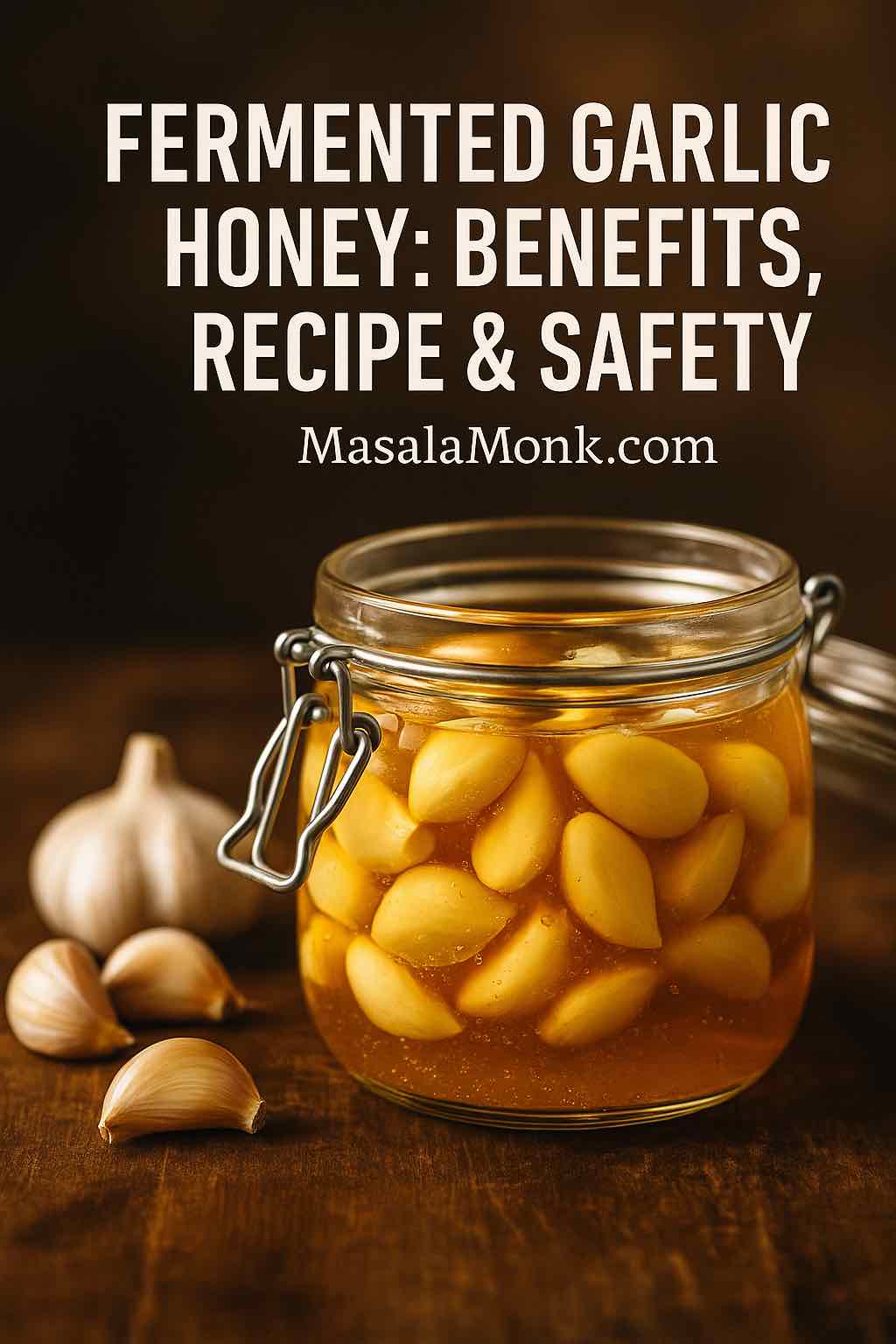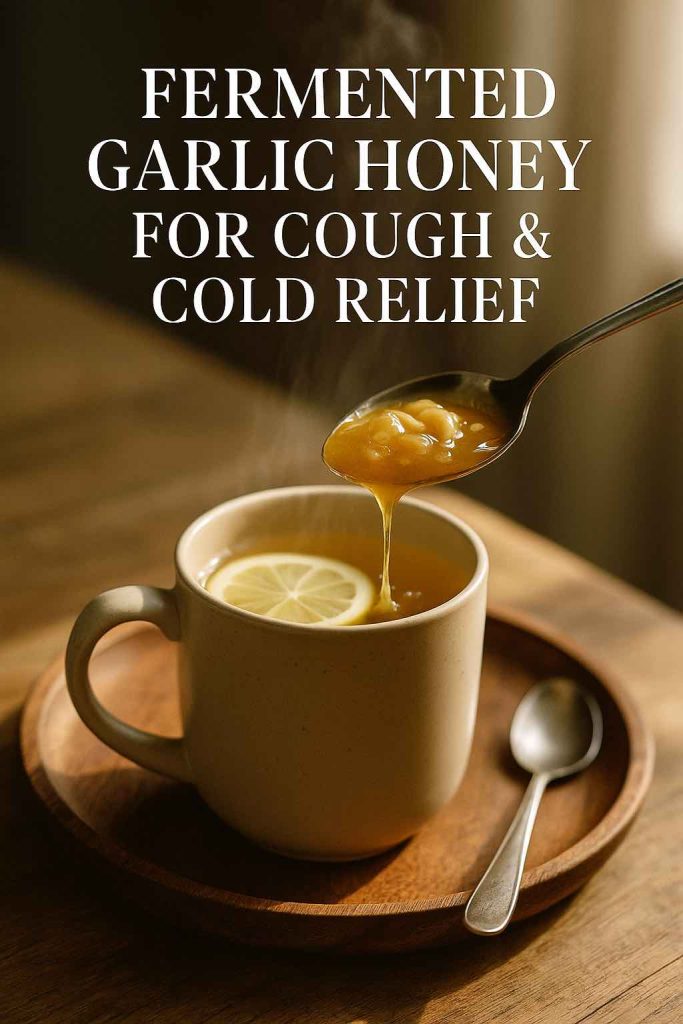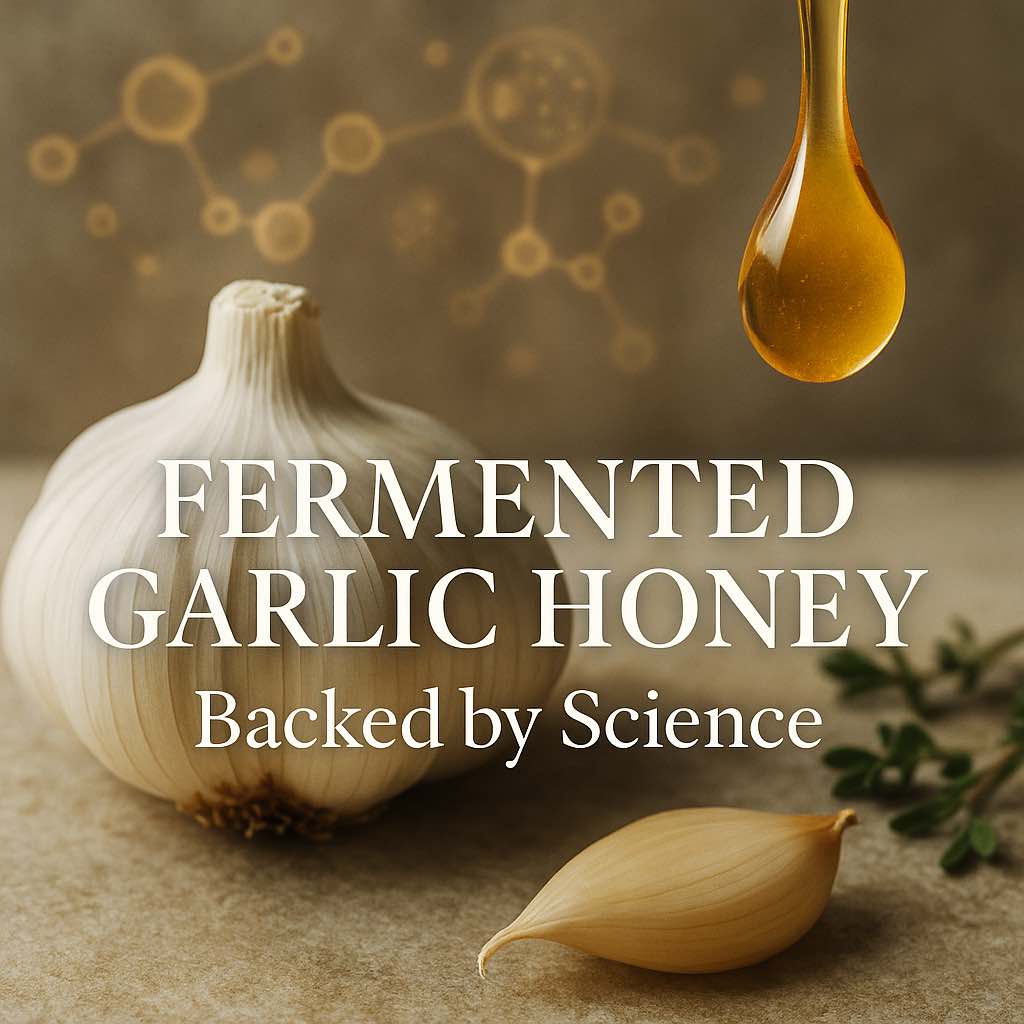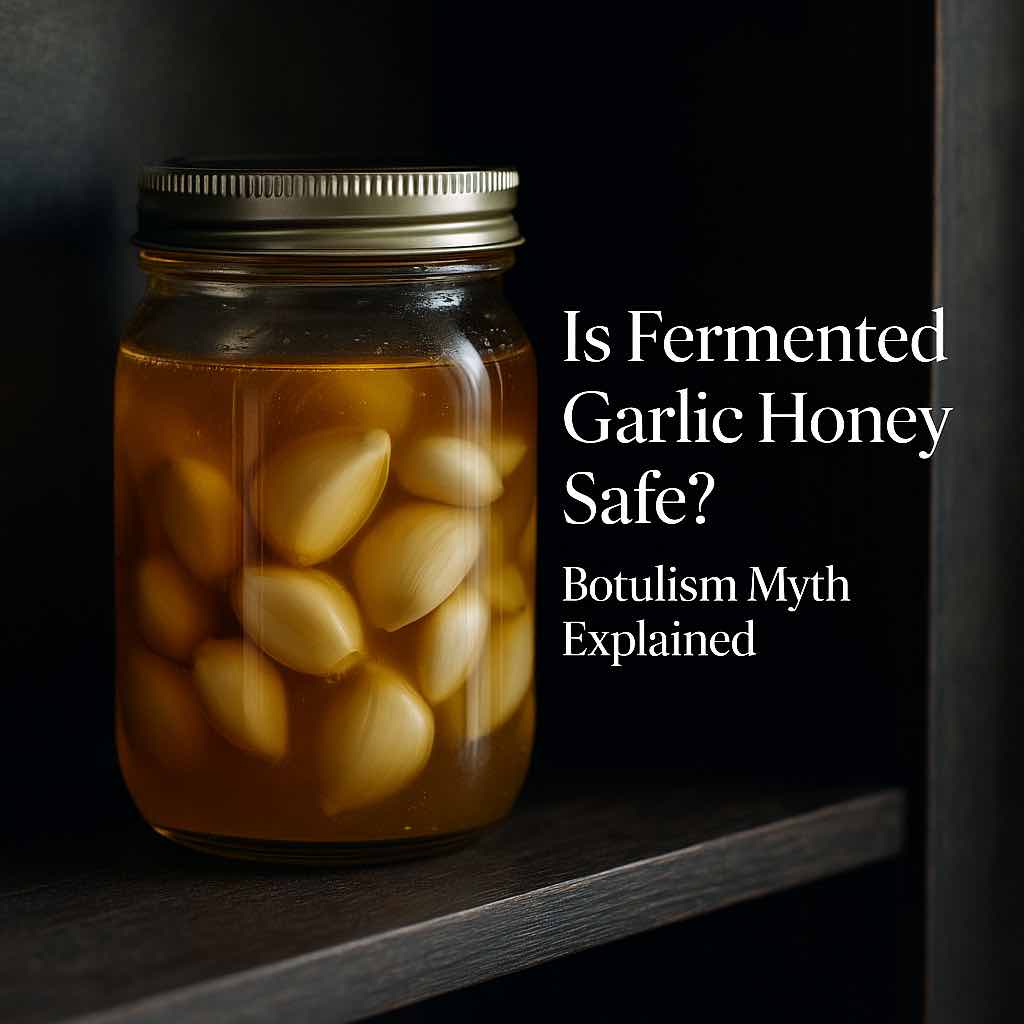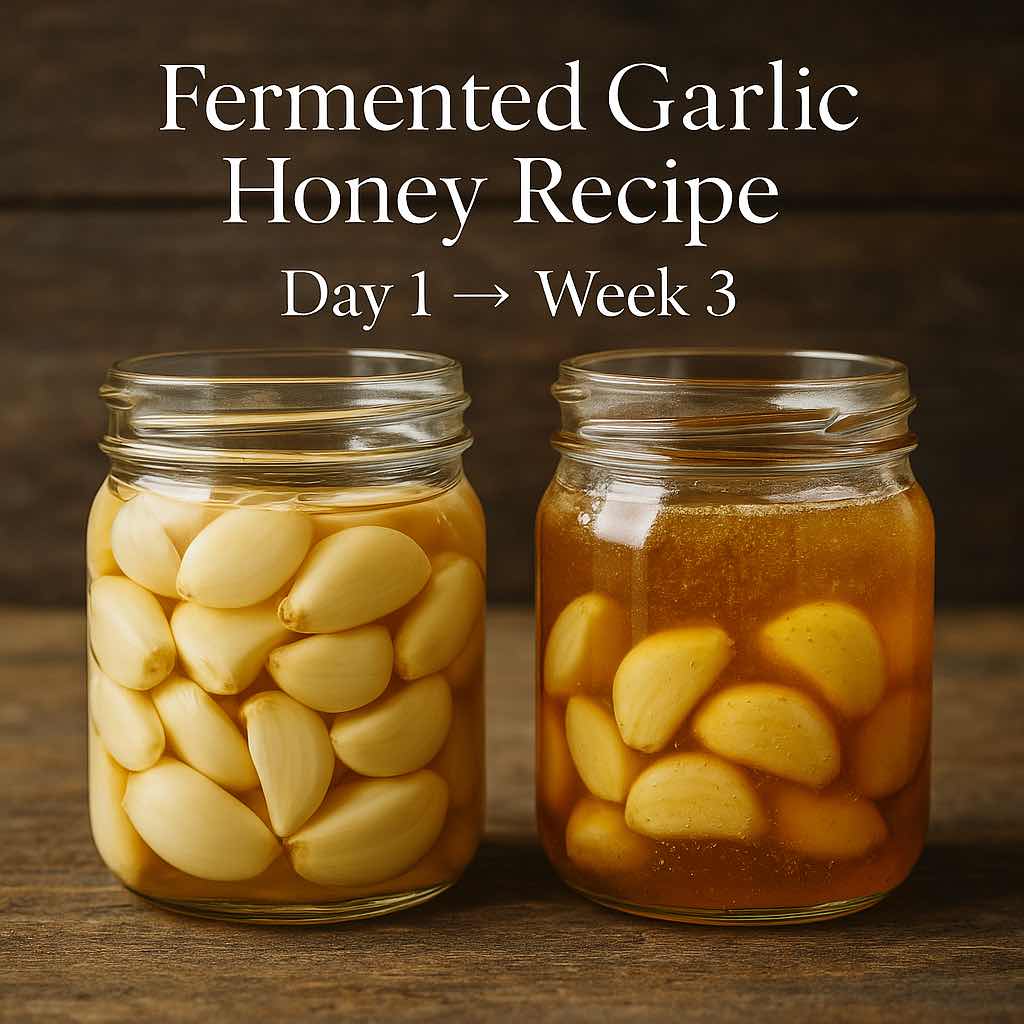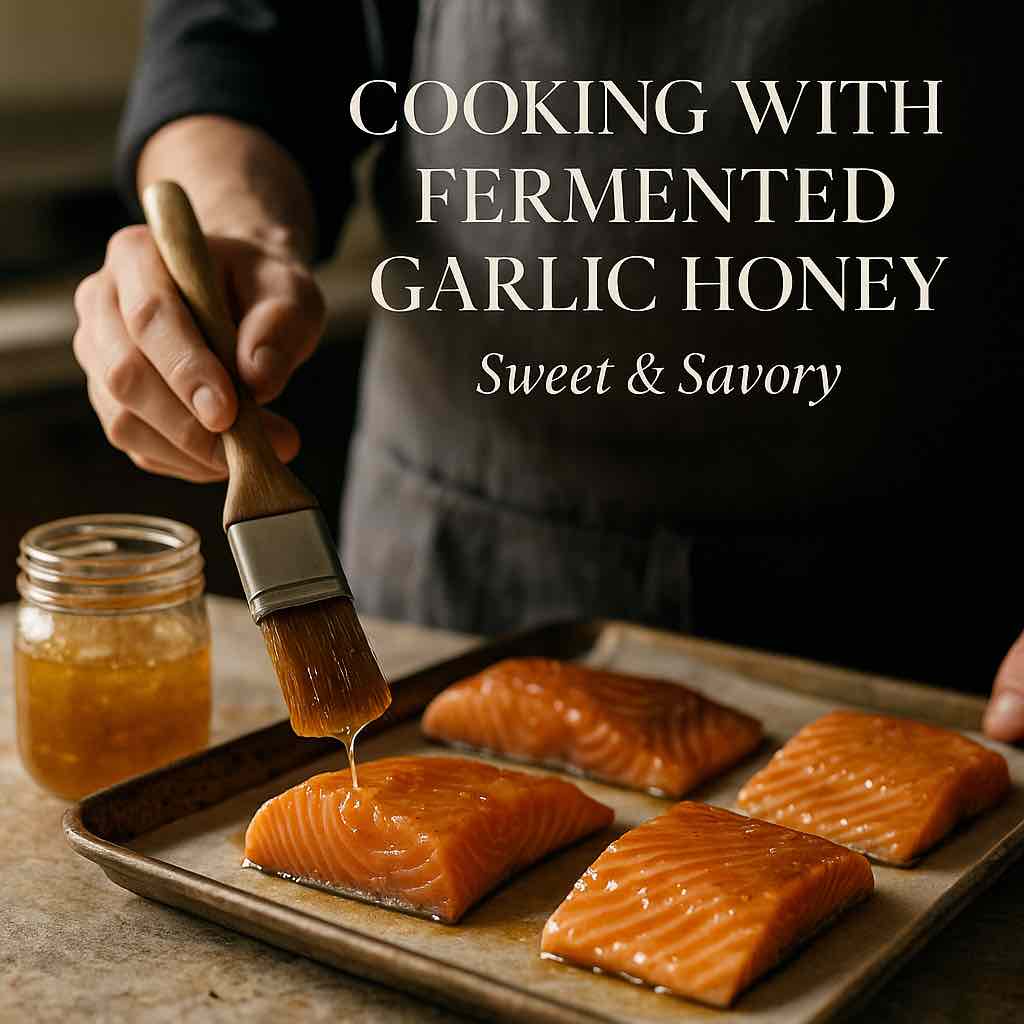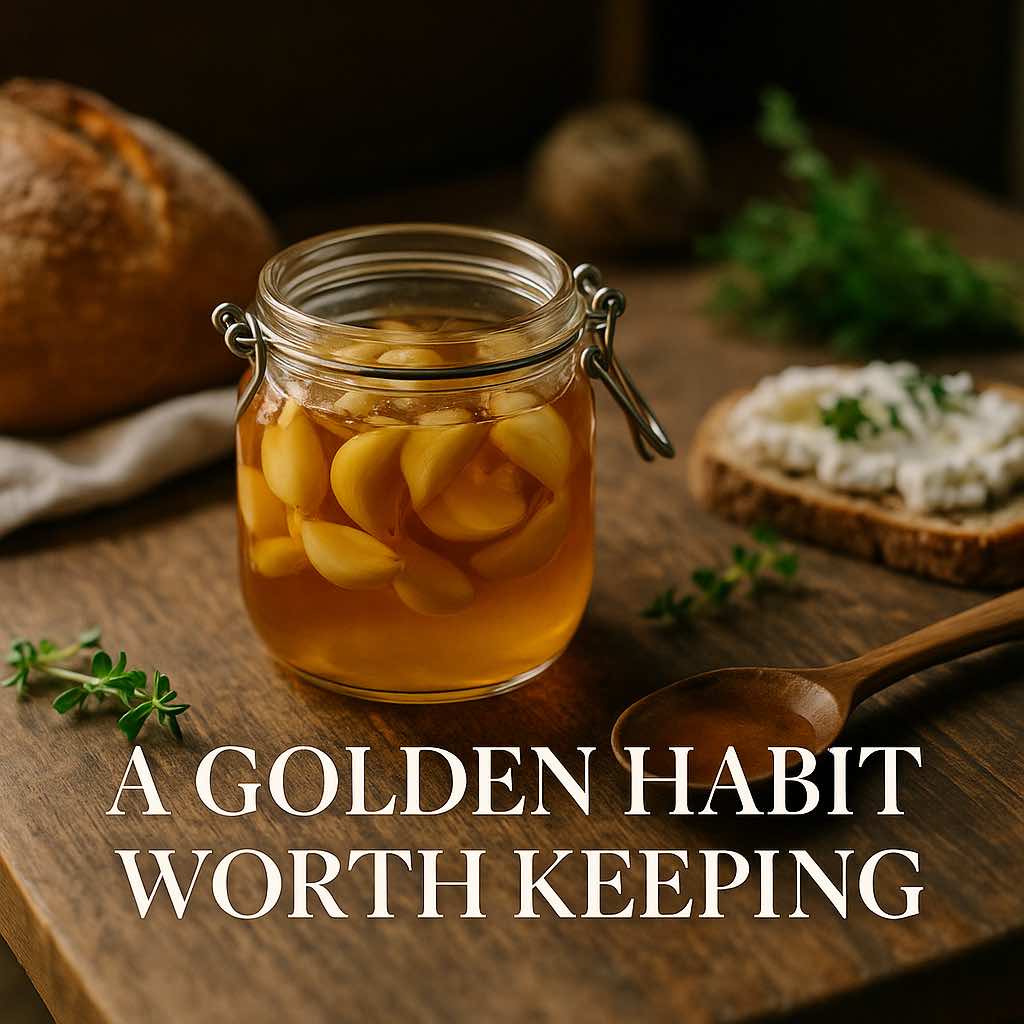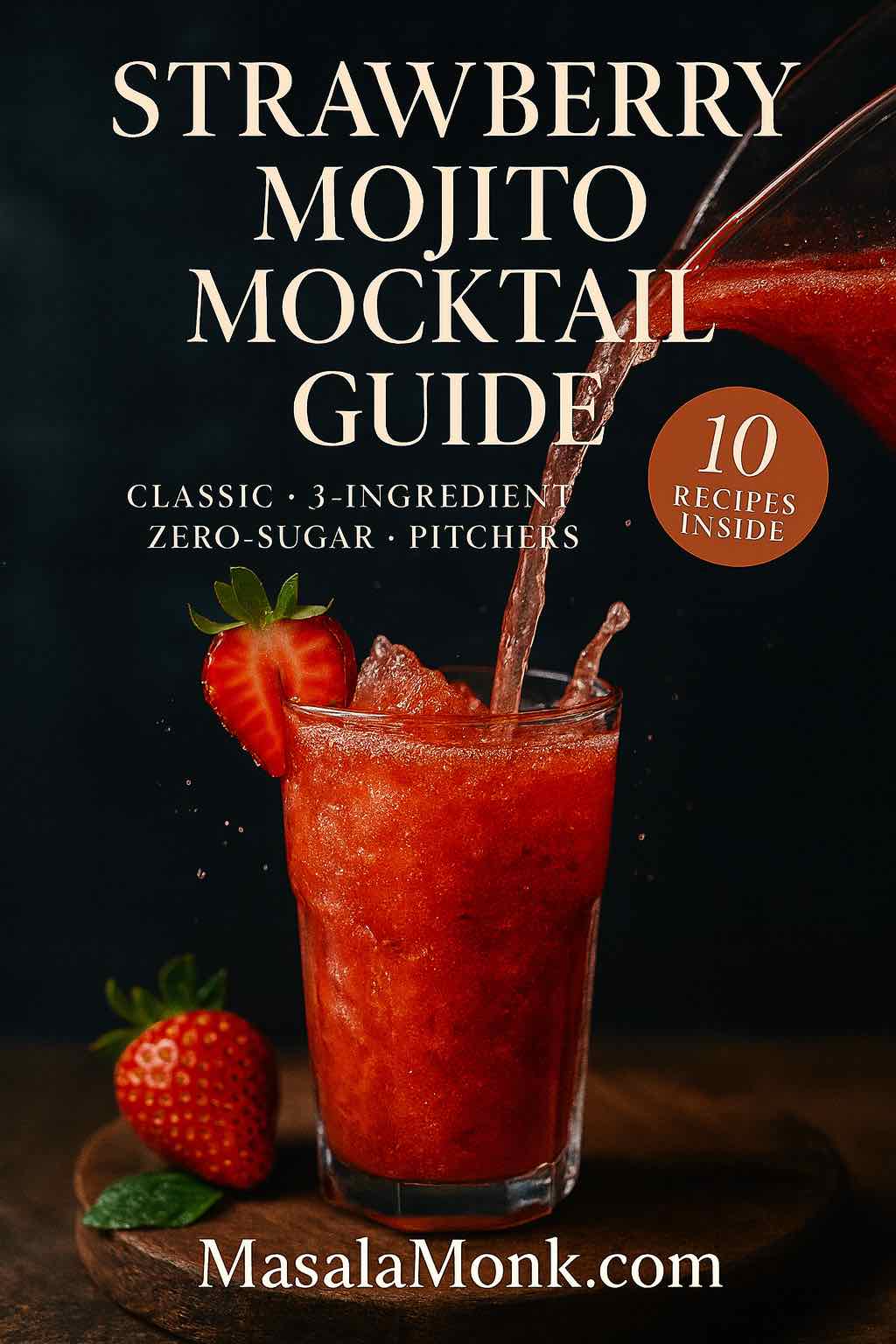
Strawberry season arrives and, just like that, the mood lightens. Baskets of berries perfume the kitchen, mint waits in a glass of water, and the first squeeze of lime wakes everything up. Today, we’re building the strawberry mojito mocktail (Zero-Proof & Virgin) you’ll reach for all summer long—actually, ten of them—so you can pour something bright and refreshing no matter who shows up or what you have on hand. Along the way, we’ll keep things friendly, practical, and a little playful.
First, a few gentle techniques. Go easy when you muddle; you want perfume, not pulp. In fact, many bartenders simply bruise the mint and skip the heavy mash entirely. For a Cuban-leaning approach, the classic rule is simple: bruise, don’t shred—that way your drink stays crisp and never drifts into grassy bitterness. And because bubbles make the glass sing, keep your fizz as cold as possible. Curious which fizz to stock? Here’s a clear explainer on seltzer vs. club soda vs. sparkling water; the short version is that club soda carries a whisper of minerals while seltzer is clean and neutral.
Now, let’s pour.
The Classic Strawberry Mojito Mocktail (single-serve)
Nothing complicated, nothing fussy—just juicy strawberries, cool mint, and lively bubbles. This is the dependable blueprint that all the variations build on.
You’ll need (1 glass):
- 80 g strawberries, hulled and quartered
- 10 mint leaves
- 20 ml freshly squeezed lime juice
- 15 ml simple syrup (or to taste)
- 120–150 ml chilled club soda or seltzer
- Ice (a mix of cubes and a small handful of crushed)
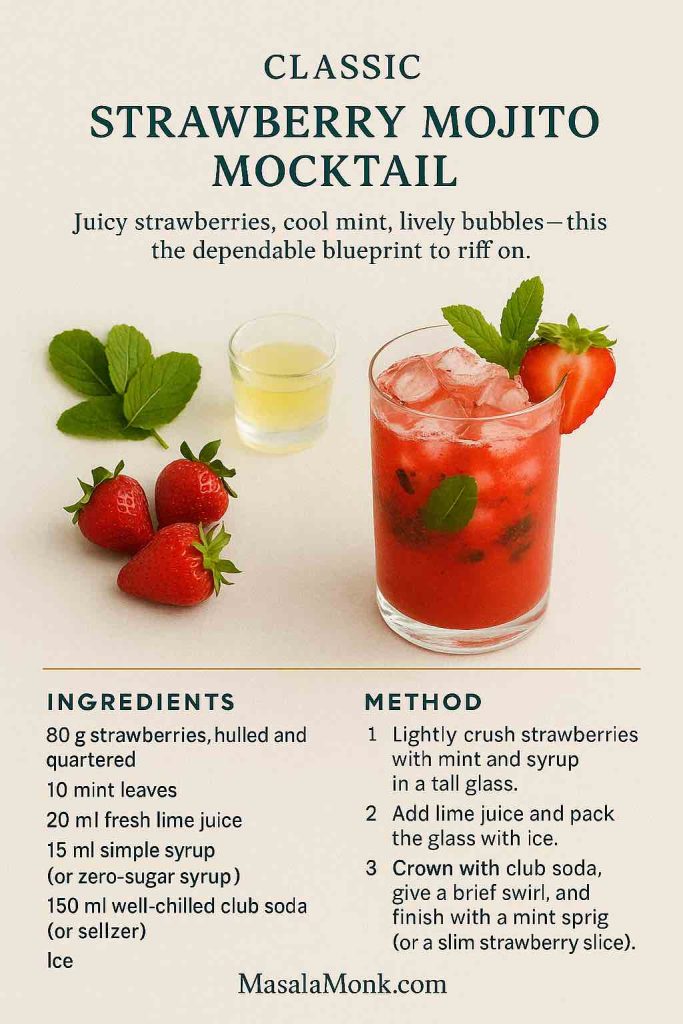
Method: In a tall glass, gently muddle strawberries, mint, and syrup until juicy but not shredded. Add lime, fill the glass three-quarters with ice, top with fizz, then stir once or twice. Garnish with a mint crown and a strawberry slice.
Prefer a drier sip? Nudge the syrup down to 10 ml and add a tiny pinch of sea salt to brighten everything without more sweetness. Want a fruitier roadmap to try later? Swing by our pineapple mojito mocktails—sunshine in a glass.
Also Read: Electrolyte Drinks for Hangovers: 5 Easy DIY Recipes to Rehydrate Fast
The 3-Ingredient Strawberry Virgin Mojito (no added sugar)
Some days call for simplicity. Here, ripe berries sweeten the party on their own, so you can skip syrup entirely.
You’ll need (1 glass):
- 100 g ripe strawberries
- 8 mint leaves
- 150 ml well-chilled sparkling water
- Optional: 10 ml lime juice + a tiny pinch of sea salt
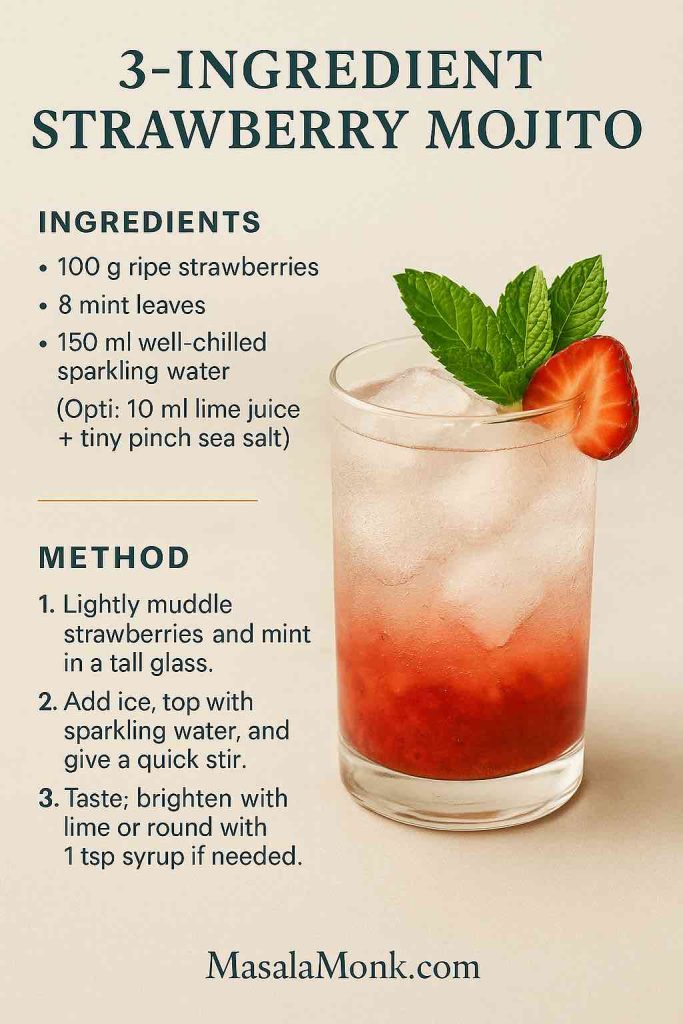
Method: Lightly muddle berries and mint in a tall glass. Add ice, top with sparkling water, and give a quick stir. Taste. If the berries are super sweet, a little lime brightens the edges; if they’re shy, a teaspoon of syrup rounds things out.
Have apples on the counter? When the moment strikes, a quick apple mojito mocktail is just as bright and picnic-ready.
Also Read: Daiquiri Recipe (Classic, Strawberry & Frozen Cocktails)
Zero-Sugar / Keto Strawberry Mojito
When you’re minding sugar yet craving something festive, this version delivers body and sparkle without the crash.
You’ll need (1 glass):
- 80 g strawberries
- 10 mint leaves
- 20 ml fresh lime juice
- 15 ml allulose syrup (1:1 water:allulose) or erythritol syrup
- 150 ml seltzer, ice cold
- Ice
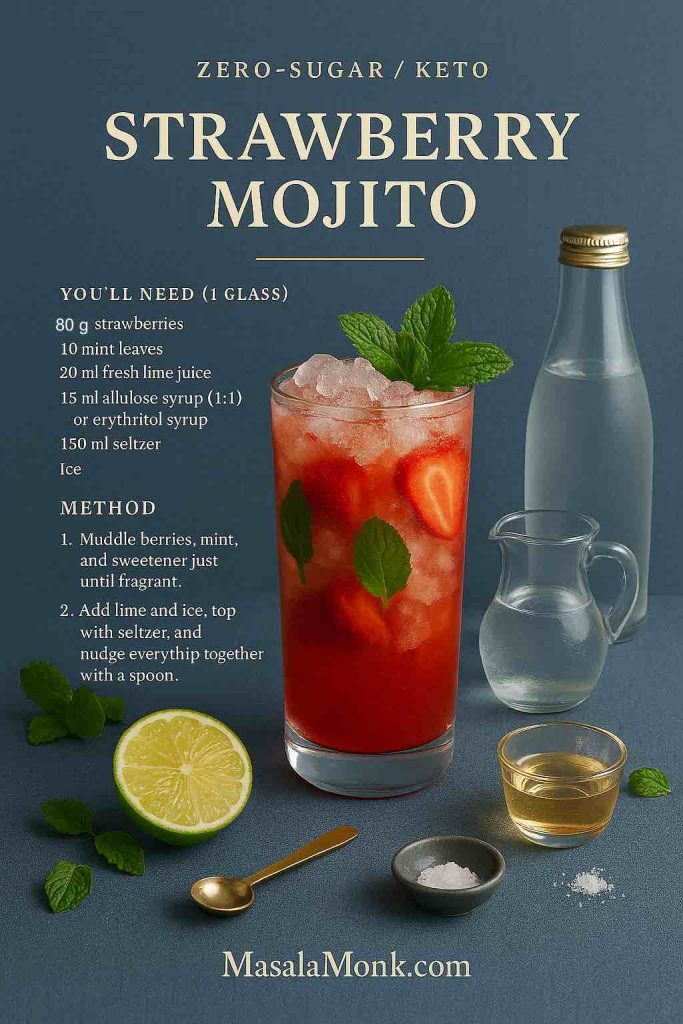
Method: Muddle berries, mint, and sweetener just until fragrant. Add lime and ice, top with seltzer, and nudge everything together with a spoon.
We like allulose syrup here for its soft, round sweetness; for the label nerds, the deeper FDA guidance (PDF) is a helpful reference.
Also Read: The Strawberry – Nutrition, Benefits, and 5 Practical Ways for Weight Loss
Big-Batch Strawberry Zero-Proof Mojito Pitcher
For picnics and parties, a pitcher keeps everything easy—and yes, you can prep most of it ahead.
You’ll need (serves ~8):
- 640 g strawberries, hulled and sliced
- 1 packed cup mint leaves (leaves only)
- 160 ml fresh lime juice
- 120–160 ml syrup (to taste; zero-sugar works)
- 1.2 L chilled seltzer or club soda (add just before serving)
- Ice for the pitcher and glasses
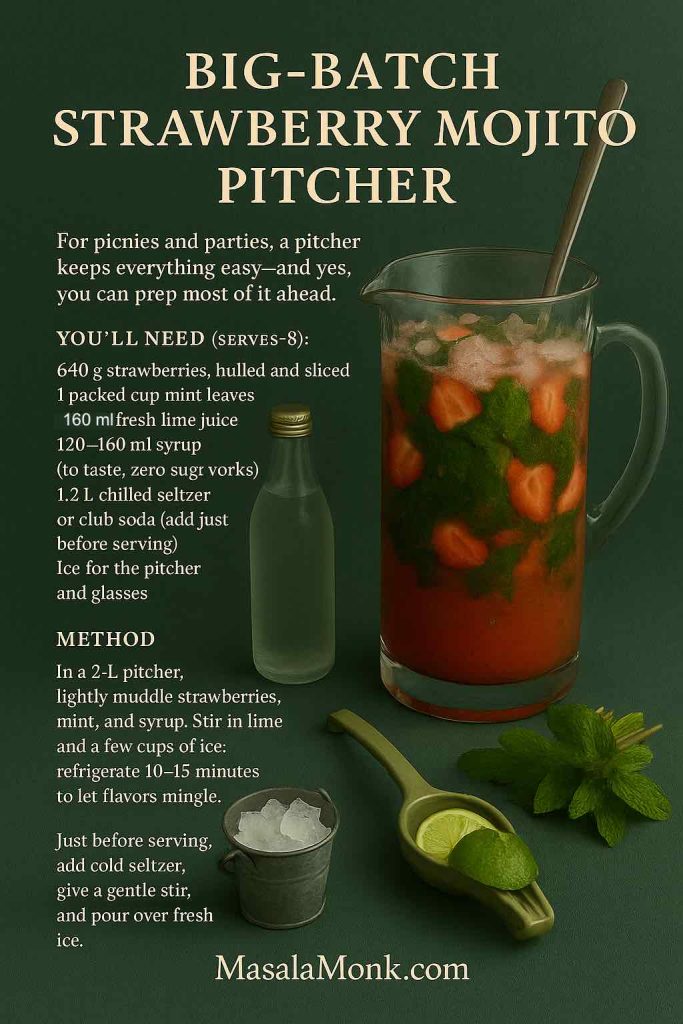
Method: In a 2-L pitcher, lightly muddle strawberries, mint, and syrup. Stir in lime and a few cups of ice; refrigerate 10–15 minutes to let flavors mingle. Just before serving, add cold seltzer, give a gentle stir, and pour over fresh ice.
Hosting tip: Set out extra ice, mint, strawberry slices, and both standard and zero-sugar syrups so everyone can fine-tune their glass. Keep your pitcher on a bed of ice outdoors and top with fizz in small waves so every pour stays sprightly.
Also Read: Punch with Pineapple Juice: Guide & 9 Party-Perfect Recipes
Strawberry-Cucumber Zero Proof/Virgin Mojito
Cool, green, and garden-fresh—cucumber reins in berry sweetness and turns a hot afternoon into spa hour.
You’ll need (1 glass):
- 60 g strawberries, sliced
- 6–8 mint leaves
- 6–8 thin cucumber rounds (plus ribbons for garnish)
- 20 ml lime juice
- 10–15 ml syrup (or zero-sugar)
- 150 ml seltzer, chilled
- Ice
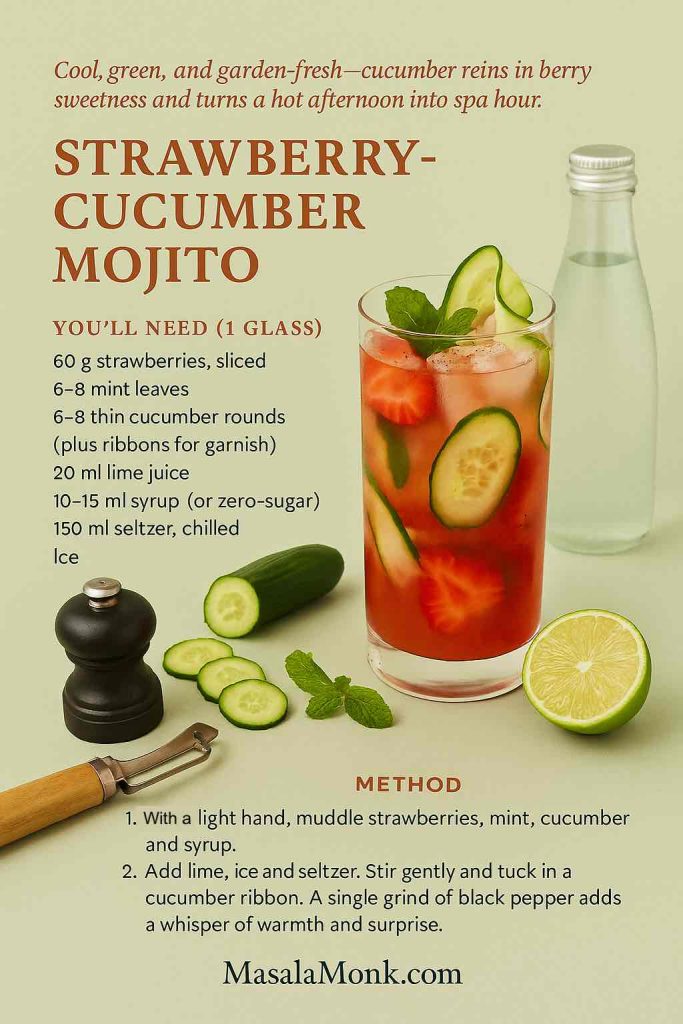
Method: With a light hand, muddle strawberries, mint, cucumber, and syrup. Add lime, ice, and seltzer. Stir gently and tuck in a cucumber ribbon. A single grind of black pepper adds a whisper of warmth and surprising length.
Also Read: Cooling Cucumber Electrolyte Quenchers: Stay Hydrated with a Refreshing Twist
Strawberry-Lemonade Mojito Mocktail
Bright, kid-friendly, and picnic-perfect. Lemonade brings sunshine; mint keeps things tidy and crisp.
You’ll need (1 glass):
- 60 g strawberries
- 8 mint leaves
- 20 ml fresh lemon juice (or 50 ml light lemonade)
- 10–15 ml syrup (omit if your lemonade is sweet)
- 120 ml seltzer (or 60 ml lemonade + 60 ml seltzer)
- Ice

Method: Muddle strawberries and mint with syrup (if using). Add lemon, drop in ice, and top with seltzer. Stir once and serve. Sparkling lemonade is a great two-bird option when you want more zip with fewer steps.
Also Read: Mango Lemonade: A Refreshing Tropical Twist to Beat the Heat!
Hydration Strawberry Mojito (with Coconut Water)
When the heat presses in, coconut water adds gentle sweetness, a little potassium, and a soft tropical note that plays beautifully with mint.
You’ll need (1 glass):
- 60 g strawberries
- 8 mint leaves
- 20 ml lime juice
- 120 ml coconut water, ice cold
- 60–90 ml seltzer (optional)
- A tiny pinch of sea salt (optional but effective)
- Ice
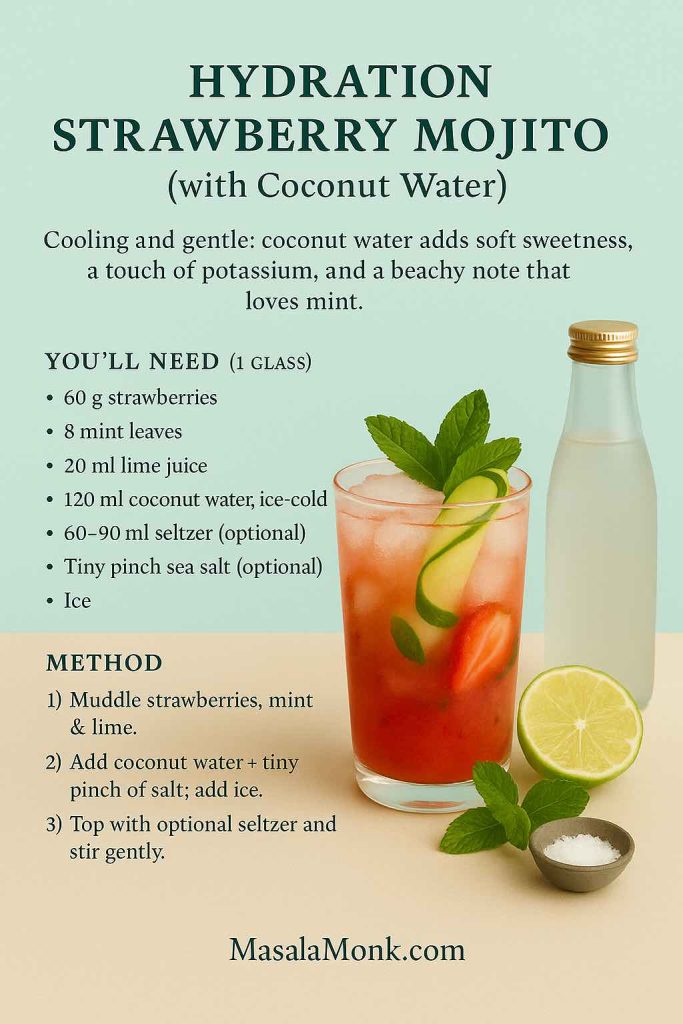
Method: Muddle strawberries, mint, and lime. Add coconut water and a small pinch of salt; top with ice and optional seltzer. Stir, smile, sip. There’s evidence that coconut water can hydrate similarly to some sports drinks, although it isn’t necessarily superior to plain water; for a balanced overview, Mayo Clinic is a good read.
Also Read: Coconut Water Cocktails: 10 Easy, Refreshing Drinks
Strawberry-Kombucha Virgin Mojito Mocktail
Lively and lightly tangy, this riff leans on kombucha for bubbles and complexity; it’s a fun way to sneak in ginger notes without adding spice.
You’ll need (1 glass):
- 60 g strawberries
- 6–8 mint leaves
- 120 ml plain or ginger kombucha, chilled
- 20 ml lime juice
- 60 ml seltzer (optional)
- 10 ml syrup (optional—taste first)
- Ice
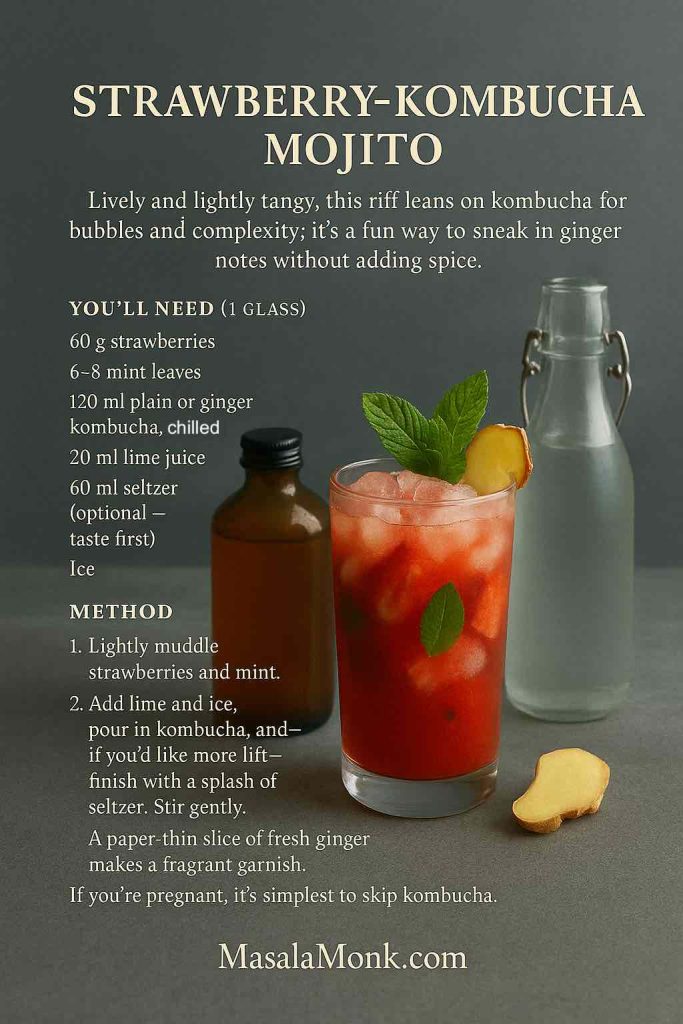
Method: Lightly muddle strawberries and mint. Add lime and ice, pour in kombucha, and—if you’d like more lift—finish with a splash of seltzer. Stir gently. A paper-thin slice of fresh ginger makes a fragrant garnish. If you’re pregnant, it’s simplest to skip kombucha.
Also Read: Health Benefits of Kombucha
Frozen Strawberry Mojito Slush
Hot day, blender out. This lands somewhere between grown-up granita and a fruit shake—refreshing without being heavy.
You’ll need (serves 2):
- 250 g frozen strawberries
- 15–20 mint leaves
- 40 ml lime juice
- 20–30 ml syrup (to taste)
- 120–150 ml cold seltzer (plus a splash to loosen, if needed)
- A handful of ice (optional)
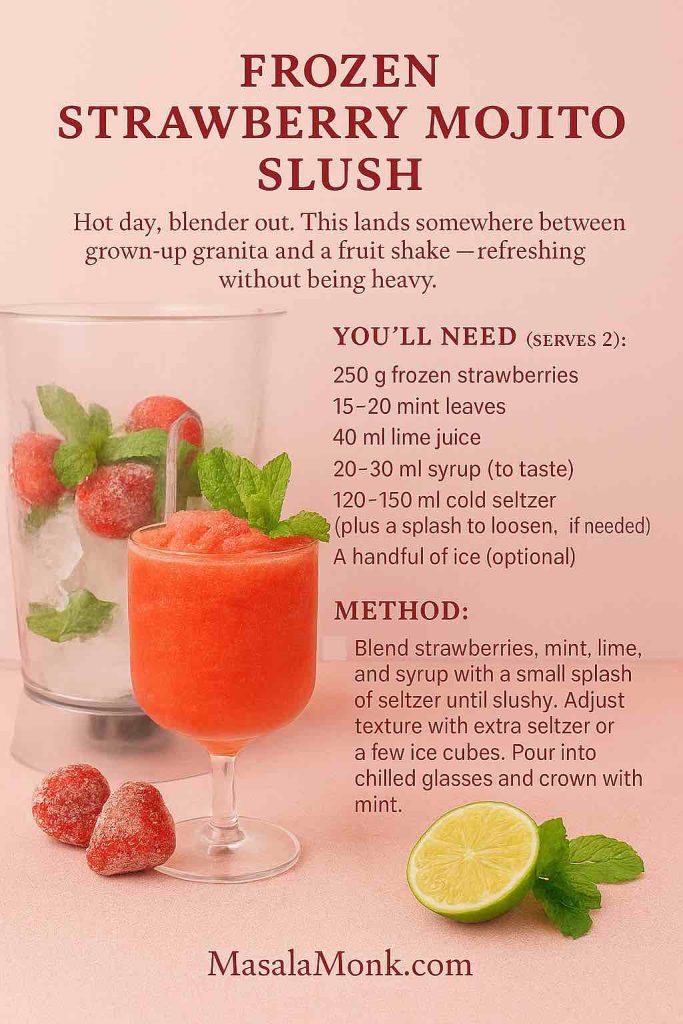
Method: Blend strawberries, mint, lime, and syrup with a small splash of seltzer until slushy. Adjust texture with extra seltzer or a few ice cubes. Pour into chilled glasses and crown with mint. A pinch of salt brightens flavors in frozen drinks where cold can mute sweetness; for a silkier feel, add 2–3 tablespoons coconut water before blending.
Also Read: Mango Martini + 5 Variants of Classic Cocktail
Non-Carbonated Strawberry Zero-Proof Mojito
Sometimes you want the flavor without the fizz—maybe for a lunchbox picnic, maybe for a quiet evening read. This still version travels well and tastes beautifully clean.
You’ll need (1 glass):
- 80 g strawberries
- 10 mint leaves
- 20 ml lime juice
- 120 ml cold still water (or a quick strawberry-mint infusion)
- 15 ml syrup (or zero-sugar)
- Ice
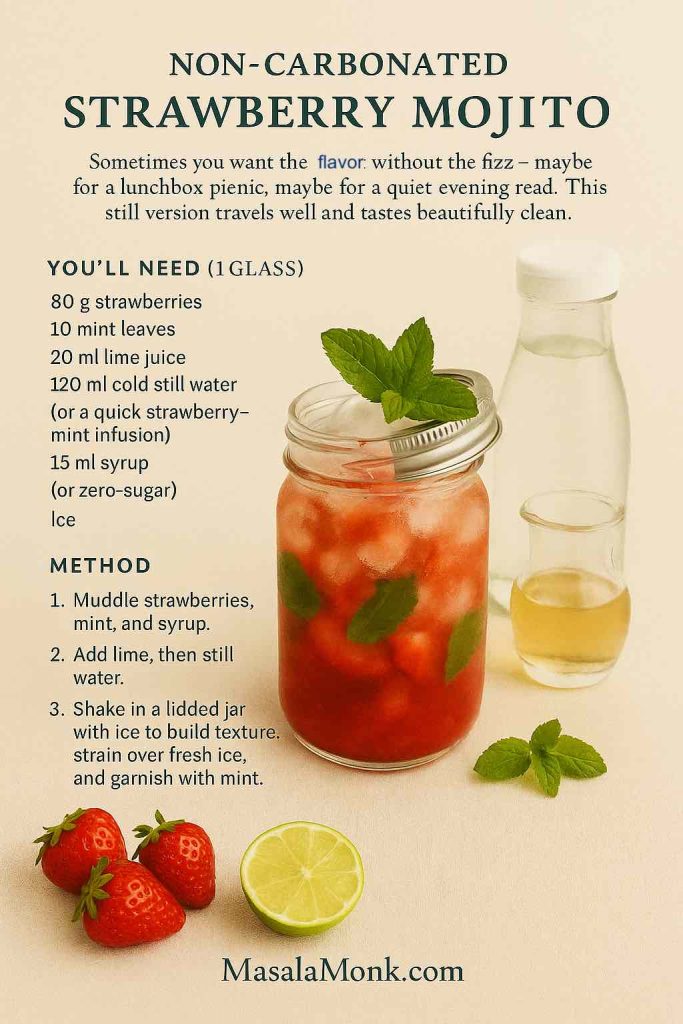
Method: Muddle strawberries, mint, and syrup. Add lime, then still water. Shake in a lidded jar with ice to build texture, strain over fresh ice, and garnish with mint. Prefer an even lighter herb note? You can skip muddling and use whole mint leaves for a brighter, less “green” taste.
Also Read: What to Mix with Jim Beam: Best Mixers & Easy Cocktails
Ingredient Swaps, Pantry Notes & Small Tricks
Let’s talk practicalities. Only lemons in the fruit bowl? They’ll do—lemon brightens differently than lime, but mint happily bridges the gap. No fresh strawberries? Frozen are fine; thaw and drain for the cleanest flavor (or lean into the Frozen Slush recipe). Prefer natural sweeteners? A jaggery syrup adds warm, mineral notes; a simple honey syrup brings floral depth; and cane juice syrup leans grassy and light. Meanwhile, if you’re cutting sugar hard, the allulose approach is wonderfully forgiving.
As for bubbles, seltzer vs. club soda vs. sparkling water boils down to small differences in minerals and texture, so feel free to use what you enjoy and what your store carries reliably. Whatever you choose, chill it deeply—and if you really want to impress, chill the glasses too. Cold glass, cold ice, cold fizz: the holy trinity of crisp.
Hosting? A tiny bit of structure makes the whole afternoon smoother. Prepare a chilled base (muddled berries, mint, syrup), keep a jar of pre-squeezed lime juice in the fridge, and add bubbles at the last minute so every pour stays lively. Create a self-serve station with ice, extra mint, sliced strawberries, and both standard and zero-sugar syrups so guests can steer sweetness to taste. And—because it’s magic for fruit—set out a little dish of flaky salt for those who want a pinch in the glass.
Finally, don’t be shy with personal flourishes. A few basil leaves alongside mint add herbaceous lift; a thin slice of ginger brings moodier evening energy; a spoonful of strawberry-chia jam turns the drink into playful texture. For garnish, a mint crown and strawberry fan never fail; a cucumber ribbon quickly signals the cucumber riff; a chili-salt rim works when you want a cheeky whisper of heat.
More to Sip Next
Love berry-fresh? Bookmark our lychee virgin mojitos for a floral twist that still plays beautifully with mint and lime. Prefer tangy and tropical? Take a sunny detour with pineapple mojitos. And if fizzy mixers fascinate you, keep this comparison handy: club soda vs. seltzer vs. sparkling water—it’s a quick read that helps you stock your fridge like a pro.
Printable cheat card (copy/paste)
Strawberry Mojito Mocktail (Classic) – 1 serve
Ingredients:
- 80 g strawberries, hulled and quartered
- 10 mint leaves
- 20 ml fresh lime juice
- 15 ml simple syrup (or zero-sugar syrup)
- 150 ml well-chilled club soda (or seltzer)
- Ice
Method:
- To begin, lightly crush the strawberries with the mint and syrup in a tall glass.
- Next, add the lime juice and pack the glass with ice.
- Afterward, crown with club soda, give a brief swirl, and finish with a mint sprig (or a slim strawberry slice).
Pro tip: Prefer a leaner profile? Trim the syrup to 10 ml; a tiny pinch of sea salt will lift the fruit beautifully.
That’s your summer playbook. Start with the classic, then wander—lighter, zestier, slushier, bigger—whatever your day calls for. And when you’ve tried a couple, tell us your favorite twist and leave a comment about it.
FAQs
1) What is a strawberry mojito mocktail, exactly?
A strawberry mojito mocktail is a zero-alcohol take on the Cuban classic: muddled strawberries and mint, bright lime juice, a touch of sweetness, and, finally, fizzy lift from seltzer or club soda. In short, it’s refreshing, fruity, and crisp—no rum required.
2) Which zero-proof mojito mocktail ingredients do I really need to keep on hand?
At minimum, you’ll want fresh (or thawed) strawberries, mint, limes, a simple syrup (regular or zero sugar), and something bubbly—sparkling water, seltzer, or club soda. Optionally, add a pinch of salt to wake up fruit, and keep crushed ice ready for that café-style texture.
3) Can I make a 3-ingredient strawberry mojito mocktail?
Absolutely. For an easy 3 ingredient mocktail, lightly muddle ripe strawberries with mint, pile in ice, and top with chilled sparkling water. If your berries are super sweet, add a squeeze of lime; if they’re a bit shy, a teaspoon of syrup rounds things out.
4) How do I keep it zero-sugar, low-calorie, or keto-friendly?
Start with berries, mint, and lime, then sweeten with allulose or erythritol syrup instead of sugar. Top with seltzer (not juice or lemonade) and you’ve got a zero sugar mocktail that still tastes full and lively—great for keto friendly virgin mocktails and skinny sips.
5) Seltzer or club soda—what’s better for a strawberry mojito mocktail?
Both are tasty; they’re just different. Seltzer is clean and neutral, while club soda has minerals that add a whisper of salinity and body. Either way, keep it ice-cold so your sparkling water mocktail stays extra crisp.
6) What if I need a pitcher for a crowd or a party?
Go big with a pitcher mocktail: scale your muddled strawberries, mint, and sweetener; chill with lime juice and ice; then, right before serving, add your fizz so it stays lively. This approach is perfect for zero proof mocktail recipes for a crowd, bridal showers, and summer brunches.
7) Can I make a non-carbonated strawberry mojito mocktail?
Definitely. For non carbonated virgin mocktails, swap the seltzer for cold still water (or a quick strawberry-mint infusion). Shake with ice to build texture, then strain over fresh ice for a clean, picnic-friendly version.
8) How do I adjust sweetness without losing balance?
First, taste your berries. If they’re ripe, start with less syrup and add gradually. If you’re using zero sugar sweeteners, remember allulose gives rounder body; erythritol can feel “cool.” Either way, a tiny pinch of sea salt can brighten fruit without extra sweetener.
9) Is a strawberry mojito mocktail safe during pregnancy?
Yes—if you keep it simple. Avoid alcoholic bitters and, if you’re cautious about fermented drinks, skip kombucha riffs. Focus on fruit, mint, lime, and sparkling water; that’s the most reliable path for pregnancy safe zero proof and virgin mocktails.
10) Can I use coconut water for a hydrating twist?
You can. Coconut water brings gentle sweetness and a soft tropical note, making a lovely hydration mocktail. Even so, keep balance in mind: add lime for snap, mint for freshness, and—optionally—finish with seltzer for lift.
11) What are smart flavor upgrades that still fit the style?
Try strawberry-cucumber for spa-day vibes, strawberry-lemonade for family-friendly brightness, or strawberry-ginger for a subtle, evening-leaning warmth. Meanwhile, for a party-ready treat, the frozen strawberry mojito slush wins on steamy afternoons.
12) Can I make it with pantry swaps if I’m low on limes?
Yes. Lemon works in a pinch; mint bridges the flavor shift. For sweeteners, jaggery (gur) syrup adds mineral depth, honey syrup brings floral notes, and cane juice syrup tastes grassy-light. If you only have club soda, not seltzer, you’re still golden.
13) What’s the best ice for a virgin strawberry mojito mocktail?
Crushed ice gives that café texture and cools quickly, while cubed ice melts slower and keeps flavors more concentrated. For pitchers, combine both: cubes in the jug, crushed in the glasses.
14) How do I write a quick mocktail ingredients list when I’m in a rush?
Keep a sticky note (or phone note) with this baseline:
Strawberries + Mint + Lime + Sweetener + Seltzer + Ice.
That’s your zero proof mocktail ingredients list for a classic strawberry mojito mocktail; from there, add cucumber, coconut water, or lemonade when the mood strikes.
15) Any garnishes that instantly elevate presentation?
Start with a mint crown and a strawberry fan. Then, as variations: a cucumber ribbon (cucumber riff), a chili-salt rim (spicy mood), or a sprinkle of unsweetened coconut flakes (hydration twist). Small details, big upgrade.
16) How can I keep the fizz lively until the last pour?
Chill everything—fizz, fruit base, glasses, and ice—so your bubbles don’t fade under warming dilution. Only add sparkling water right before serving, especially for pitcher mocktails. Stir gently rather than shaking to preserve carbonation.
17) What’s an effortless way to make it “healthier” without fuss?
Beyond zero sugar swaps, use extra strawberries in place of syrup for a 3 ingredient vigin mocktail, add a pinch of salt to brighten fruit, and choose seltzer instead of juice for lift without extra calories. Simple changes, fresher taste.
18) Which variations tend to be most popular based on user interactions?
The margarita and mojito families dominate, with strong interest in spicy, zero-sugar, keto/low carb, pregnancy safe, and pitcher formats. Within mojitos, strawberry, cucumber, watermelon, blueberry, and lemonade twists show consistent curiosity—happily, this guide covers those trends.






